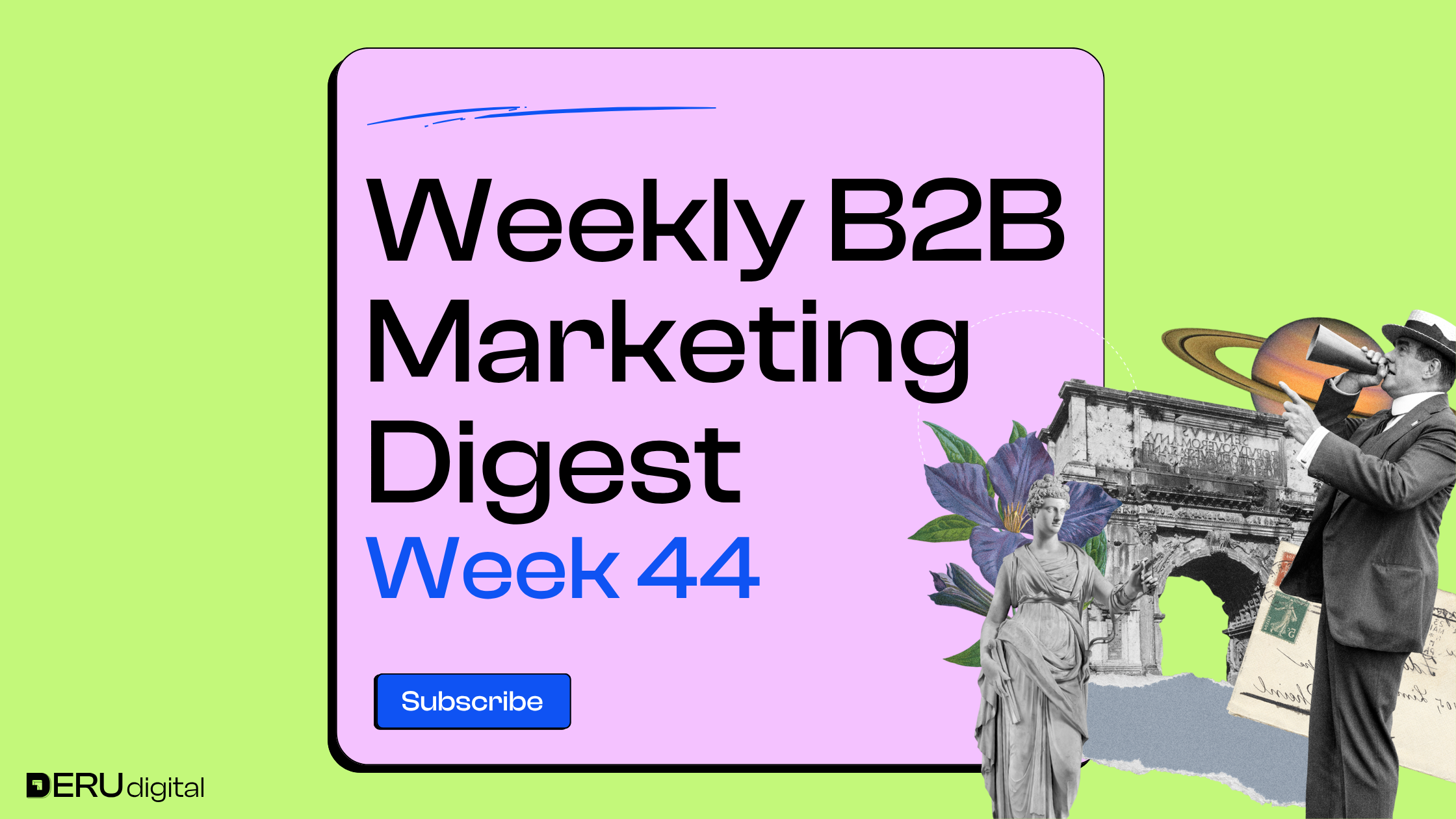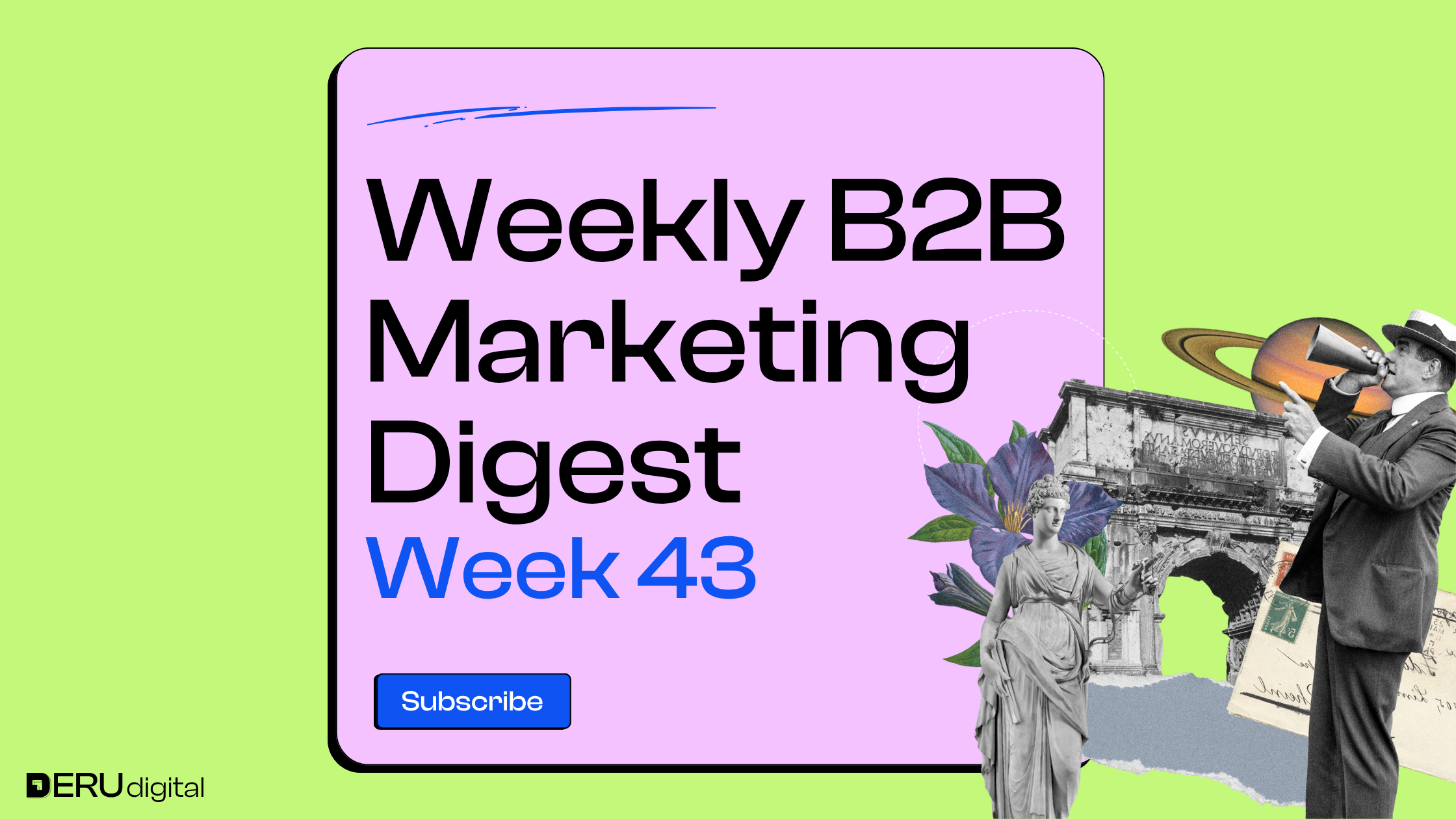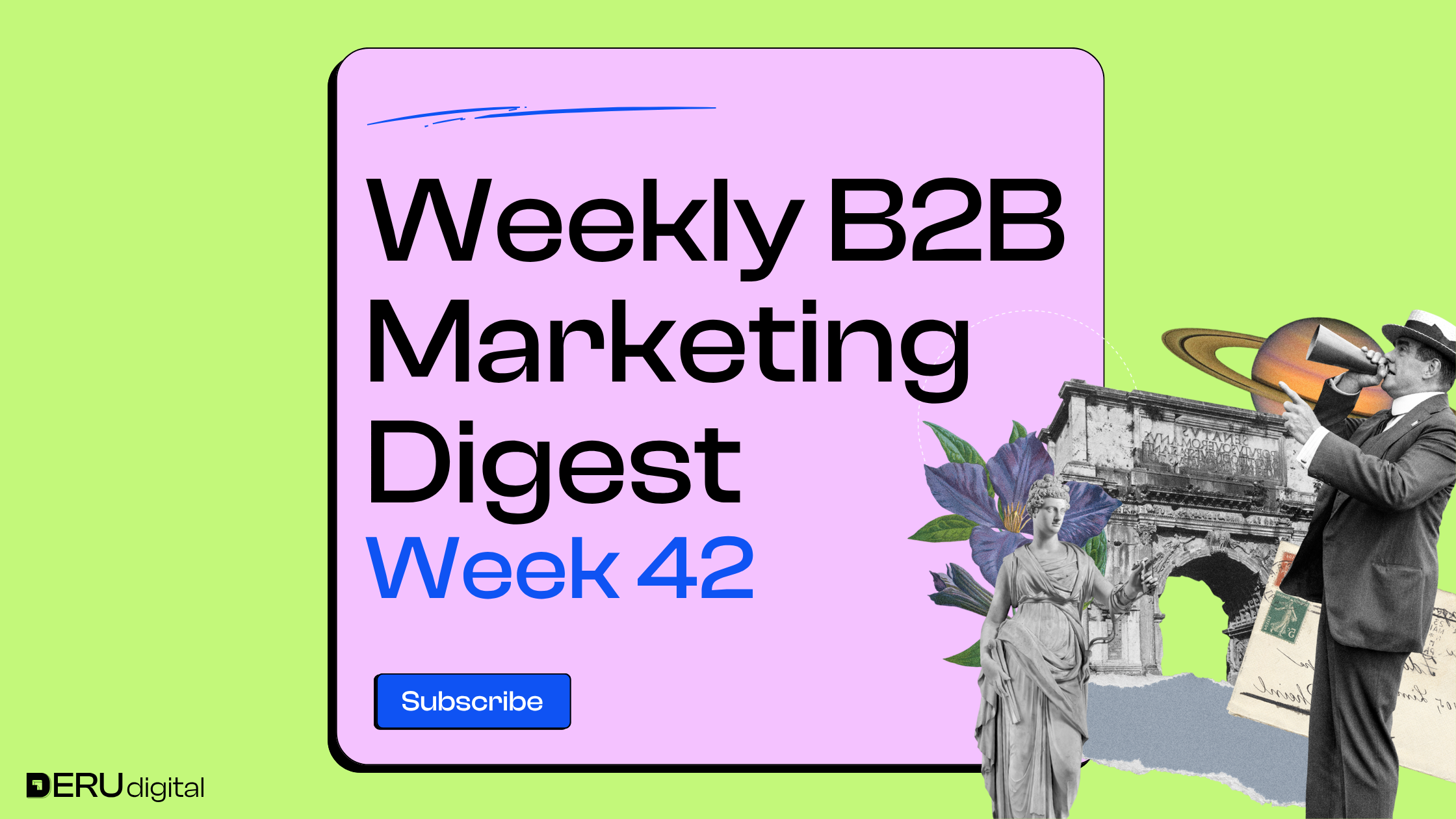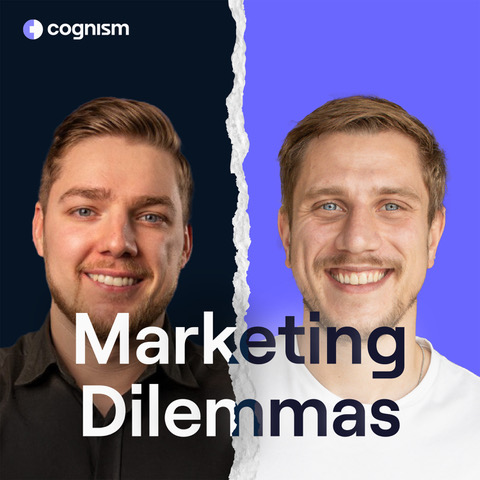

INSIGHTS FROM EXPERTS ON LINKEDIN
Lena Weber-Reed points out that, according to Dreamdata’s new LinkedIn Ads Benchmark Report, 70% of the B2B buying journey is complete before sales even step in. Prospects have already researched, compared, and built their case, meaning marketing now plays the lead role, not just the warm-up act. If marketing hasn’t made your brand a frontrunner by the time sales arrive, you’re already behind.

Olga Andrienko shares how she rebuilt her company’s homepage to be clear, credible, and action-driven. She focused on clarity (“we’re a course builder for employee training”), added trusted brand logos for credibility, and included an interactive demo to show the product in action. Her next goal is to track how the redesign converts and fine-tune it over time.

Kerry Cunningham reveals insights from new regression models studying what affects B2B buying journey length. The biggest factor? Buying group size – more people mean longer decisions. He hints that buying cycles have shifted this year in surprising ways, with more details to come in the full report.

Andrei Zinkevich breaks down six key fundamentals for building a strong full-funnel marketing strategy – from solid GTM foundations and cross-functional teamwork to changing attribution models and balancing long-term programs with short-term ROI. He stresses evolving gradually using his POS framework (Pilot → Operationalize → Scale) and always leaving room for innovation and experimentation.

Emilia Korczynska shares her simple checklist for deciding when an ad deserves to be paused. Instead of relying only on CTR, she looks for at least 1,000 impressions, frequency over 4, CTR below 0.5%, and dwell time under 3 seconds. It’s a more balanced, data-aware way to judge performance without getting lost in endless metrics.

Kevin Goodwin admits he once thought brand marketing was a waste compared to performance ads until discovering works by Tom Roach, Les Binet, and others changed his mind. Now he’s focused on proving digital media can build a brand if done right, emphasizing quality reach, incrementality, and rethinking how algorithms are used.

Sam Kuehnle argues that running too many projects at once kills momentum and results. His team tested focusing on one project at a time in short sprints, completing, learning, and moving to the next quickly, instead of spreading energy thin across several “in progress” tasks. The outcome: faster wins, clearer feedback, and real progress.

Ben Brown just released a free tool to make managing negative company lists in LinkedIn Ads much easier. Instead of manually updating campaigns or uploading endless CSVs, the tool lets you sync exclusions in one place, just like adding negative keywords in Google Ads. He’s offering early access and looking for creative name ideas.
WHAT'S NEW IN THE INDUSTRY
Meta announced several updates to its lead generation products ahead of what it calls “Q5” – the quieter period right after the holidays. The upgrades include easier CRM integrations through Zapier and Salesforce, lead verification via SMS and work emails, automated Messenger follow-ups, and improved Advantage+ lead campaigns that combine website and instant forms. Meta says advertisers who invest in Q5 can expect lower CPMs and better conversion rates as competition drops.
A new TrustRadius report shows that 86% of Gen Z professionals now use AI daily at work, marking a major shift in how B2B buyers research and evaluate software. Nearly half use AI tools as a primary research method, replacing traditional search engines, and C-suite leaders are also heavily engaged. The rise of generative AI means marketers must adapt content strategies for visibility in AI-driven discovery – a new frontier dubbed “Generative Engine Optimization.”
Google Ads is tightening security by requiring users to verify their identity before making key account changes. The verification pop-up, currently optional, will become mandatory after November 13, 2025. Some advertisers are already seeing the new step without a skip option, signaling a gradual rollout before full enforcement.

Google Ads is experimenting with a new “Cross campaign metrics” chart in the Overview tab that shows how awareness and action campaigns overlap in reach. The feature uses a simple Venn diagram to display shared audiences, unique users, and total costs, giving advertisers a quick look at how campaigns work together. It’s a step toward easier, more integrated performance measurement across objectives.

Google Ads is testing a new “People Also Search For” section inside sponsored results, showing related queries beneath text ads. While this could help users discover more topics, it might also pull clicks away from advertisers’ main ads or surface competitor terms. It’s a small test for now, but one that could meaningfully affect ad performance and control if rolled out widely.

That’s the scoop for this week! If you found this valuable and any useful insights caught your eye, feel free to share them with your network.
Until next week!



